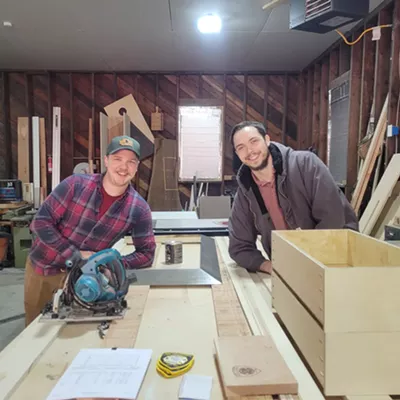In this issue, I would like to address something that is hard to get out … namely, constipation. However, I want to address a very specific type of constipation that we see frequently in children — chronic retentive constipation, or as I like to call it, monsterpation.
I think the name is appropriate because often kids will have bowel movements that are enormous in size and quantity. Let me describe how this happens, because the physiology holds the answers to associated problems and solutions.
The descending colon, last stop before the pot, can be thought of as a stretchy balloon — like a clown might use to make a dog or hat. When this segment of the intestine is stretched, it is supposed to send signals to the brain to get to a toilet. However finding a toilet is not always possible or convenient — say, for example if one is watching Power Rangers. So the colon owner ignores the signals and rides through the urge with some clamping of the lower anal sphincter, often resulting in what I call “the chocolate waddle.”
This process can be repeated, and often is for many children for an alarming amount of time. That balloon just keeps getting more and more and more packed. In response, the constipatee just clamps down on that anal sphincter tighter and tighter. At last, the colon can resist the urge no more — usually because poop is “touching cotton.” An emergent race for the toilet ensues. It is then we meet the monster, often with plunger in hand.
The elasticity of the descending colon is remarkable, and that is what allows the huge size and volume of stool to accumulate. The thing that is confusing for most parents is that their child may have one or more massive stools every day. How could they be constipated? Constipation is when you can’t poop, or you pass some rabbit pellets after days without results, right? No, that is what is commonly thought, but the Latin word constipare comes from the roots com “together” and stipare “to cram, pack.” That is what we are talking about — cram-packing poop until it can be withheld no more.
The problem is that to hold back stool, one has to recruit extra muscles from the abdominal floor, and a constant muscle tension results. Problems associated with monsterpation can include stomach pain, nausea, carsickness, diminished appetite, daytime wetting, nighttime wetting and soiled underwear.
The solution to the problem of monsterpation is not simple, and it often takes as long to resolve as it does to develop. The first step is a thorough cleanout. Not long ago, the main options for this were enemas to draw out stool, medicines to stimulate stooling or ingested substances like mineral oil or prune juice to soften stool. These measures might be effective, if they were sustainable, but kids often just won’t drink mineral oil or prune juice twice.
Fortunately, we are now blessed with a miracle — namely Miralax, which, like the mineral oil or prune juice, provides a concentration gradient in the colon, drawing out water, which helps flush out the colon. This compound truly is a game-changer, because it can be added to nearly any liquid and is virtually undetectable. It does not cause any dependence, and it can be given in multiple successive doses to get the pipes clean.
But cleaning out the monsterpator is just the beginning. A comfortable stool habit must be maintained for months to come. Ideally, this will be achieved with a diet rich in fiber and sorbitol-containing fruits, like pears, prunes, plumbs, cherries, grapes, mangoes, plums, etc. However, it can be difficult and expensive to get four or five servings of those daily, so Miralax is often continued.
The key to long-term improvement is a complete change in stooling behavior. The ideal routine involves sitting on the toilet for at least five minutes after each meal (at least after breakfast and dinner). It is important to have feet well supported while sitting, so a step stool may be necessary. It is also important not to be distracted while sitting, so avoid books, videogames, card games, etc.
In time, hopefully the stretched-out, desensitized colon will get back to a more normal size, delivering a nice, comfortable stool every day or two. Don’t be too hasty throwing out the plunger, but maybe it can at least gather some dust under the sink.
Matt Thompson is a pediatrician at the Kids Clinic in Spokane.














